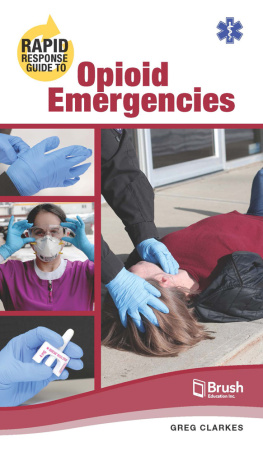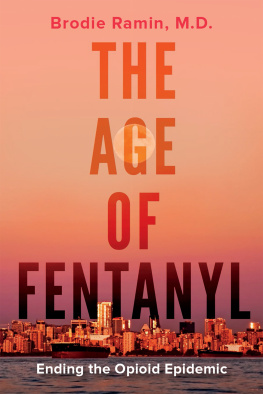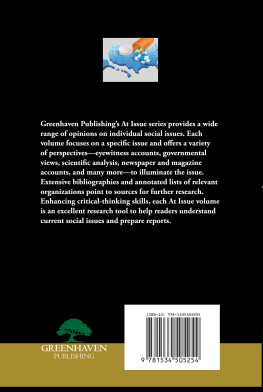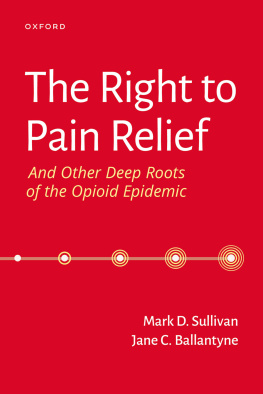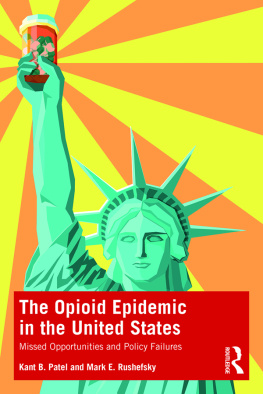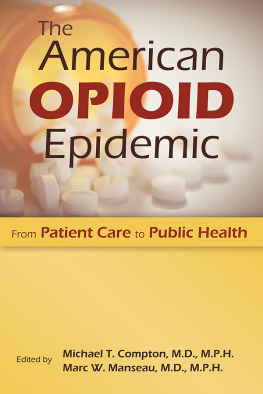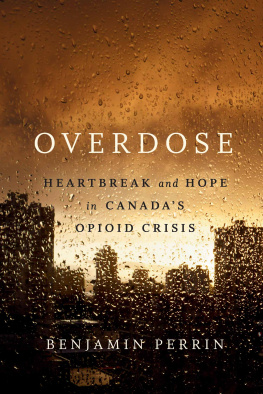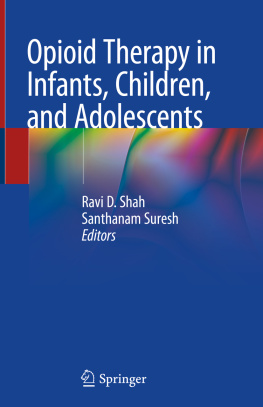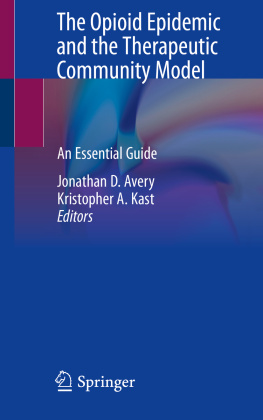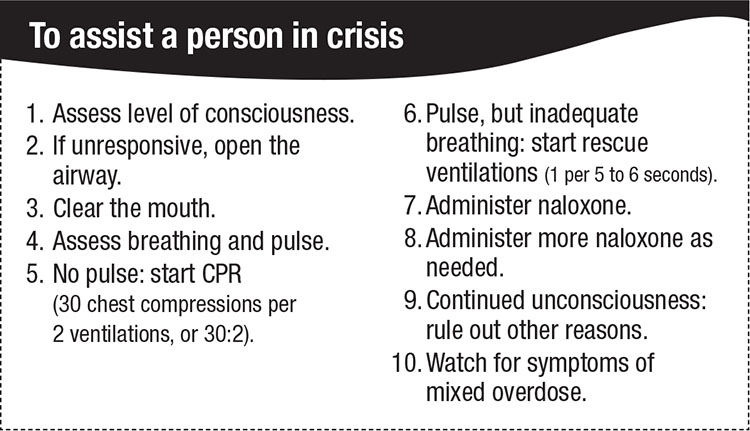Free Download
Always be ready to deal with an opioid emergency wherever you are.
Download and print out this handy wallet-sized card with simple,
step-by-step instructions at brusheducation.ca/opioids
Want to learn more and build your skills?
Check out Greg Clarkess online training for opioid emergencies,
complete with videos and quizzes.
Visit RapidResponseGuides.com to register.
Copyright 2020 Greg Clarkes
20 21 22 23 24 5 4 3 2 1
Printed and manufactured in Canada
Thank you for buying this book and for not copying, scanning, or distributing any part of it without permission. By respecting the spirit as well as the letter of copyright, you support authors and publishers, allowing them to continue to create and distribute the books you value.
Excerpts from this publication may be reproduced under licence from Access Copyright, or with the express written permission of Brush Education Inc., or under licence from a collective management organization in your territory. All rights are otherwise reserved, and no part of this publication may be reproduced, stored in a retrieval system, or transmitted in any form or by any means, electronic, mechanical, photocopying, digital copying, scanning, recording, or otherwise, except as specifically authorized.
Brush Education Inc.
www.brusheducation.ca
contact@brusheducation.ca
Cover and interior design: Carol Dragich, Dragich Design. Cover image: Nicola Eddy, Penkee Productions. Images: water bottle: Ruslan Grumble / Shutterstock.com; Purell hand sanitizer: BrandonKlein Video / Shutterstock.com; Evzio auto-injector: AP Photo/Richmond
Times-Dispatch, Bob Brown; all other images: Nicola Eddy, Penkee Productions
Library and Archives Canada Cataloguing in Publication
Title: Rapid response guide to opioid emergencies / Greg Clarkes, ACP, NRP.
Names: Clarkes, Greg, 1965- author.
Description: Includes bibliographical references.
Identifiers: Canadiana (print) 2020024129X | Canadiana (ebook) 20200241478 | ISBN 9781550598414 (softcover) | ISBN 9781550598421 (PDF) | ISBN 9781550598438 (Kindle) | ISBN 9781550598445 (EPUB)
Subjects: LCSH: Opioid abuse. | LCSH: Opioid abuseTreatment. | LCSH: OpioidsOverdose.
Classification: LCC RC568.O45 C53 2020 | DDC 616.86/3206dc23

Contributing reviewers
Claudia Martin, DDS
Director, Postgraduate General Residency Program, Dentistry
Department, Faculty of Medicine and Dentistry, University of Alberta
Clinical associate, University of Alberta Dental Clinic
Alberta, Canada
Michelle Meyer, PMHNP-B, FNP-BC, MSN
Ohio, USA
Chris Nichol, MD, CCFP
Family physician
Alberta, Canada
JoAnne Seglie, RN, COHN (C)
Occupational health nurse
Workforce Safety and Employee Health, Employee Services
Department, City of Edmonton
Alberta, Canada
Judy Vandenberg
Advanced care paramedic, Alberta Health Services
Alberta, Canada
Contents
Who should use this guide?
This guide is for everyone.
In the current opioid epidemic, opioid emergencies can arise without warning, in situations we didnt anticipate and among those we didnt expect to be affected.
If you are prepared, you can save lives.
You may be a member of the public. Maybe you are a coach, a teacher, a student, a worker in the hospitality industry, the safety officer in your sports club, or a family member of someone who uses prescription opioids or illicit drugs. Generally, you do not have the equipment or training to respond to opioid emergencies. This guide shows you how to prepare and what to do.
You may be a police, security, or corrections officer. You are often first on the scene of opioid emergencies. Some officers have on-the-job equipment and training for responding to opioid emergencies, including emergencies among coworkers from accidental opioid exposure. Many, however, do not. This guide shows you how to prepare and what to do.
You may be a community outreach worker. Community outreach workers are often experienced rescuers, with the knowledge and equipment to respond to opioid emergencies. This guide provides useful review for you. It also discusses possible gaps in safety protocols, and situations that pose particular risks to your personal safety from opioid exposure.
You may be a health-care provider in a hospital or in emergency services. You may be an emergency-room doctor, a unit nurse, or other medical staff in a hospital. Or you may be an emergency medical technician (EMT), a paramedic, a firefighter, or a police officer (depending on the training police receive in your jurisdiction). You are among the best prepared and best trained to respond to opioid emergencies. For you, this guide provides useful review. It also alerts you to situations that pose particular risks to your personal safety from opioid exposure.
You may be a health-care provider in a medical outpatient facility. Outpatient facilities provide dental, orthopedic, and eye surgeries, and other medical procedures. Any medical staff trained to administer opioids in caring for patients (e.g., for sedation or pain) is also trained and equipped to respond to opioid emergencies. For you, this guide provides useful review. For nonmedical assistants in your workplace, it provides crucial information.
You may work at a medical clinic in the community. Maybe you are a doctor, a nurse, or other staff in a medical office or walk-in clinic. Community medical clinics should be prepared for opioid emergencies, which can involve people in crisis brought in by friends or family. Many community medical clinics are not prepared. This guide provides the information you need.
You may be a home-care worker. Home-care workers who provide services to cancer or palliative patients may encounter opioid overdoses because of the pain medications their patients receive. Use this guide to make sure you have what you need and know what to do.
COVID-19 and this guide
The World Health Organization declared COVID-19 a pandemic on March 11, 2020. COVID-19 could continue as a serious public health threat until March 2022. As long as the threat lasts, everyone needs to take steps to protect themselves and to limit the transmission of the virus, including during response to opioid emergencies. Look for alerts like these in this guide: they provide specific advice on responding to opioid emergencies during the COVID-19 pandemic.
Disclaimer
The publisher, authors, contributors, and editors bring substantial expertise to this reference and have made their best efforts to ensure that it is useful, accurate, safe, and reliable.
Nonetheless, practitioners must always rely on their own experience, knowledge and judgment when consulting any of the information contained in this reference or employing it in patient care. When using any of this information, they should remain conscious of their responsibility for their own safety and the safety of others, and for the best interests of those in their care.
To the fullest extent of the law, neither the publishers, the authors, the contributors nor the editors assume any liability for injury or damage to persons or property from any use of information or ideas contained in this reference.

